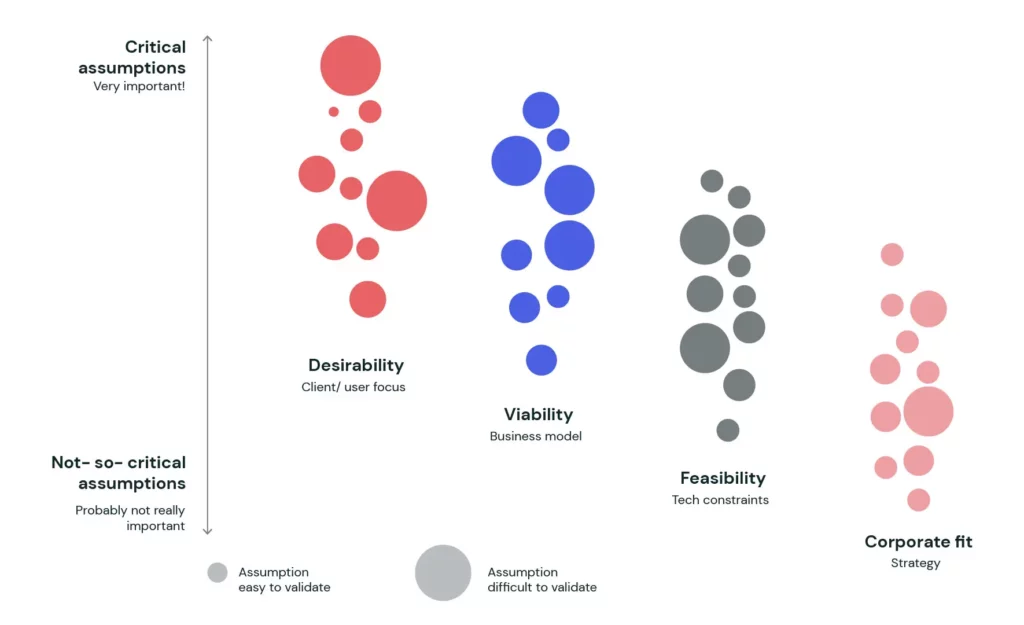In the recent years, I probably discussed thousands of business assumptions with +100 corporate startup teams. In these discussions, I tend to focus on helping them to discover the most critical assumptions. They always have limited time. What should they do next when we evaluate their innovation project?
We will typically sort all assumptions in 4 big categories:
Does somebody care about your innovation? Does it create value for someone
Is there a market opportunity? Can this project be monetised
Can we build ‘the thing’?
Should we (or this particular team) do it? Does it fit the corporate strategy?

In general, there is a clear priority where category 1 is more critical than 2, etc. But in reality, everything is far more blurry than the idealised theory. A team with 4-5 intrapreneurs will always work on some of the assumptions of category 4. (e.g. basic stakeholder management within the organisation).
Example: You’re developing a new online sales platform that might bypass your internal sales reps.
I can repeat 1000 times that at an early stage they should not “waste” time on talking to their sales department (cat.4), before knowing if clients out there would care. (cat.1). In reality, there are always some people on the team will reach out to some colleagues to check the basic concerns of the sales team. If not in an official meeting, they will chit chat around the water cooler to get some early feedback.
So I don’t fight this. I work with them!
I will convince them that in order to get your internal sales reps on board, it will help to get some real (first) insights from the market. Market evidence will always trump opinions in meetings.
So instead of a black or white set of priorities, I rather work with a lot of grey. There is a full spectrum of “critical” assumptions in each cluster. Some of the technical assumptions will be far more critical than some of the user/client assumptions. On top of that, if a specific assumption is relatively easily to validate, why postpone that learning?
It becomes a real problem when a corporate team mainly zooms in on category 4 assumption. There might be so many ‘easy checks’ that can be done just by talking to your colleagues in the comfort of your own meeting room. Some people flock to this kind of work and will completely ignore category 1 & 2 assumptions because it’s just a lot harder to do early stage market validation.
One of the main reasons why we often work with multiple teams at once in bootcamp programs is that teams will challenge each other. If 3 of 5 teams make significant progress by direct customer interaction, it will help to convince the other two teams to do something similar.


